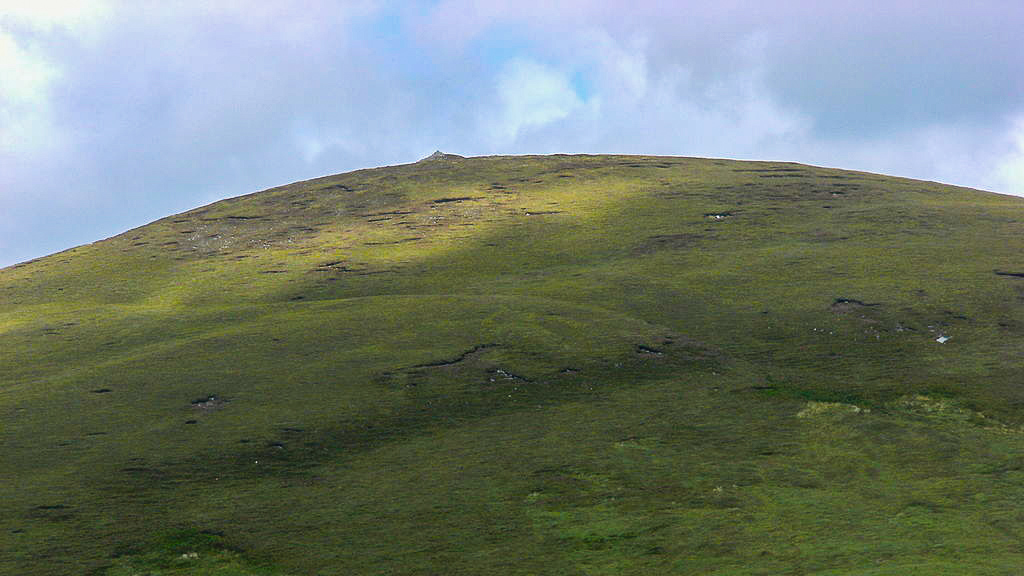Táin Bó Flidhais in Co. Mayo

Táin Bó Flidhais, also known as the Mayo Táin, is a tale from the Ulster Cycle. It tells the story of a cattle raid (Táin Bó), which took place in Mayo in the area around Bangor Erris beside Carrowmore Lake.
This exciting and adventurous Celtic mythology saga was written by Scottish Medieval scribes in the 15th-century vellum manuscript known as Glenmasan Manuscript in Argyll.
The manuscript seems to be a first-hand copy of an early 13th-century exemplar and is held in the Advocates Library in Edinburgh, the National Library of Scotland.
The plot develops from Ráth Chruacháin in County Roscommon, from where Queen Meadhbh and her army left on a journey through Mayo to lead a punitive cattle raid at Rath Muireagáin near Glencastle in Erris. They aimed to steal the legendary white cow known as the Maol.
The respected Gamhanraidh tribe lived in Mayo and Oilill Fionn, son of a powerful chieftain called Domhnall Dualbhuidhe (Donal of the yellow locks), was the King.
His wife, Flidhais Fholtchain (Flidhais of the lovely soft hair), is the main character of this saga.
Flidhais and Oilill’s tribe rules over a vast territory stretching all the way west of the Shannon from North Mayo to County Clare. The couple owned two fords the Dún Flidhais at Rathmorgan, located on Carrowmore Lake in Erris and the Dún Átha Féan situated west of Lough Conn near the Nephin.
They also owned the legendary Maol and several large herds of cattle and deer. According to legend, every day, the Maol could supply enough milk to satisfy three hundred men, their women and their children in one milking.
Flidhais used to live at Rathmorgan where her legendary cow was penned, while Oilill liked to stay at Dún Átha Féan on Lough Conn.
The troublemaker hero Bricne was a guest at Cruachan at the Royal rath of Queen Maedbh and her husband King Ailill in Roscommon. One day he set off for Rathmorgan to cause trouble, and he initiated the battle which became known as the Táin Bó Flidhais.
Travellers coming from Queen Maedbh’s court were welcomed with courtesy and high respect. When Bricne reached Flidhais’ fort, she and her entourage wined and dinned him in grand style. Knowing Flidhais had knowledge of and interest in Fergus, famous hero and former King of Ulster, he played up all the charms of Fergus, who also was Queen Maedbh’s lover at that time.
Back at Cruachan, he told Fergus and Maedbh about Flidhais’s magnificent palace and her irresistible beauty. When Fergus heard about Flidhais, he lusted for her making Queen Maedbh jealous.
In the meantime, King Ailill, Maedbh’s consort, discovered the daily infidelity and one night he stole Fergus's enchanted sword and replaced it with a wooden replica in revenge.
Fergus and his supporters set off and travelled to Rathmorgan where he engaged a fight with Oilill for Flidhais. First, the two chiefs fought then all their supporters joined in the battle. Blood flowed and over 1,000 men were killed. Eventually, Fergus drew his powerful magic sword to win the battle, but it was only a wooden replica and he was captured. Oilill won the battle and put Fergus in jail.
The remaining troops came back to Cruachan and, when Queen Maebdh knew of Fergus, she and her army set out to Erris to free her lover and lead a punitive cattle raid which became known as the Táin Bó Flidhais.
Approaching Rathmorgan Maebdh’s army fought and defeated many tribes and asked the leaders of Oilill's army to desert, offering them the kingship of the Gamhanraidh. Many of them accepted.
Despite the situation, Oilill and his warriors won some fights. In the meantime Flidhais, alone at the fort with Fergus and other prisoners, set their betrayal. When Oilill was back from the battle she gave him a potion; soon he fell asleep, and she sent a message to Maedbh's troops to attack the fort.
Fergus and the prisoners were free and, after a bloody fight against a weak Oilill and his 97 warriors survived, he won the final battle.
Fergus carried off the already sorry Flidhais, the Maol, everything of value from Dún Flidhais fort and also her large herds of cattle and deer.
On their way back to Cruachan, Maebdh and her retreating army were attacked by small bands of the Gamhanraidh tribes and at Glenamoy Hills there was a violent fight again.
Eventually, Domhnall Duabhuidhe from Glencastle (Oilill’s father) and his army arrived at Glenamoy. Domhnall’s army also consisted of a massive number of vicious wolfhounds. The dogs tore and bit Maebdh’s soldiers; the entire army suffered losses. Then Fergus and Domhnall came to fight and Fergus killed Domhnall.
Many warriors came to the scene from Croagh Patrick and, when Muireadhach the Stutterer (Domhnall’s grandson) heard about his death, he attacked Maebdh’s troops and recovered Flidhais and the Maol.
After a long, dangerous journey back to their fort, Queen Maebdh, her husband and Fergus reached Cruachan and that is the end of the Táin Bó Flidhais.
